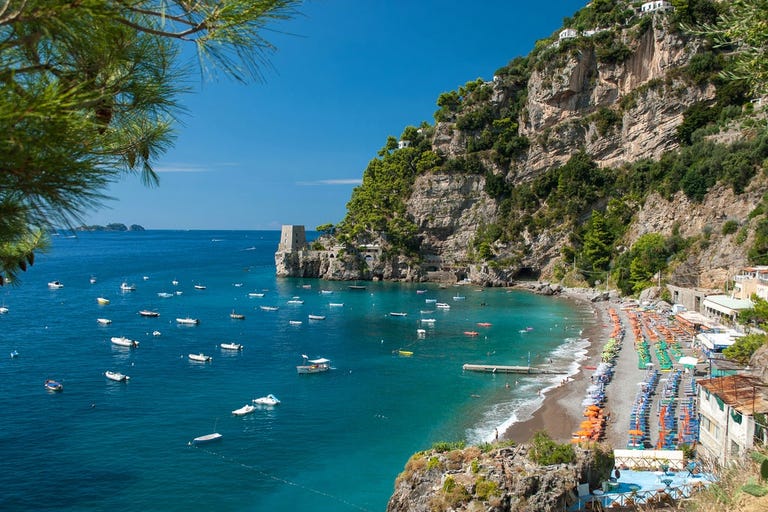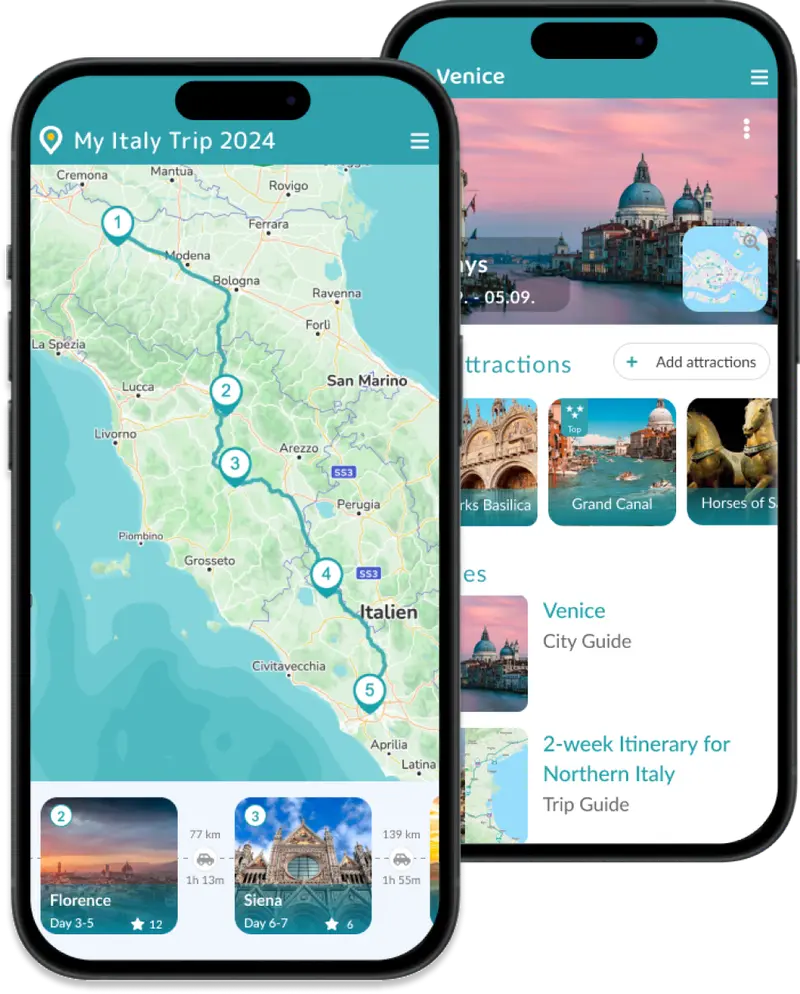Nestled on the dramatic Amalfi Coast, Positano is a picturesque paradise that seems to cascade down the steep cliffs to the azure waters below. The charming village is famed for its vibrant buildings, luxurious beaches, and narrow, winding streets filled with unique shops and delectable Italian cuisine. Positano is not just a destination; it's an experience, offering breathtaking views at every turn and a serene atmosphere that captures the essence of Italian coastal living. Whether you're seeking a romantic getaway or an adventure into the heart of the Amalfi Coast, Positano promises memories that will last a lifetime.
Top Highlights of Positano



Travel Information
When to visit best?
Best time to visit: Visiting Positano in May or September offers ideal weather for swimming and fewer crowds, allowing you to enjoy the Amalfi coast most. In May, you can experience the beauty of spring blooms. September, while slightly cooler, still provides great beach weather and hosts unique events, such as the prestigious ballet gathering, Premia della Danza, and the local favorite, Festa del Pesce.
Worst Time to Visit: July and August are the peak tourist months, meaning overwhelming crowds. Beaches and restaurants become extremely crowded, leading to traffic jams along the single access road and making it difficult to fully enjoy the town's charm.
Low Season: From November to March, Positano enters its low season with most hotels closed.
How to get to Positano?
Positano can be a bit tricky to reach due to its cliffside location on the Amalfi Coast. The nearest major airport is in Naples, from where you can continue your journey to Positano by train, bus, ferry, or car. If you're coming from Rome or Naples, taking a train to Sorrento and then a SITA bus to Positano is a popular option among travelers./ Alternatively, during the tourist season, ferries operate from Naples, Sorrento, and Capri directly to Positano, offering a scenic route along the coast./ For those who prefer driving by car, be prepared for narrow, winding roads along the coast and difficulties in finding parking. Take the smallest car possible.
Fancy a roadtrip?
Be inspired by our hand-picked road trips.

History
The earliest evidence of human settlement in Positano traces back to the Upper Palaeolithic period, with the Grotto La Porta cave being a notable site frequented by gatherers and hunters.
The Roman era marked a significant period in Positano's history, with the construction of luxurious villas along the coast of the Sorrento Peninsula around 100 years BC. These villas, characterized by their dispersed layout and elite ownership, signify the area's importance and desirability even in ancient times. Excavations have provided insights into these grand residences, revealing structures that were not only architectural marvels but also hubs of social life for the Roman elite.
Moving into the modern era, Positano transitioned from a wealthy market port in the 15th to 17th centuries, to facing economic challenges by the mid-19th century. The village's fortunes began to change in the 1950s, when it started attracting a large number of tourists. The publication of John Steinbeck's essay "Positano Bites Deep" in Harper's Bazaar in 1953 played a crucial role in bringing international attention to the village. His portrayal of Positano as "a dream-like place that isn't quite real when you are there and becomes beckoningly real after you have gone", enticed visitors from all over the world.




